“Gasolina??” the border inspector repeated incredulously.
“Sí,” I sighed. I had just explained that our friends in La Paz said they had heard that the road was open, but to bring extra water and gas.
Josh, Uly and I waited in the hot shade 100 meters from the US border in Tecate, México, while two Mexican border inspectors eyed our overloaded Toyota Tacoma. At a glance, we were four surfboards, two bikes, many unnecessary warm layers, a cooler, fifteen extra gallons of gas and the same amount of water, and a dog, for a 1,200 mile drive into unknown road conditions down the second longest peninsula in the world after one of the most devastating hurricanes ever recorded there.
These two women about my age seemed mildly worried for us. You know about the storm, right? she asked again with something almost like concern. Hence the gas, I said, and the woman holding the AK-whatever leaned back against the truck behind me and shrugged.
After just a few minutes the woman in charge walked back over to us and explained we could go, but really, you can’t BRING gas into the country unless it’s in the tank or UNDER the truck (eye roll.) But go ahead (slight smile.) I thanked her and away we drove into the desert of Baja Norte.
Day 1
Desert valleys and mountains and a burgeoning wine country led us to Ensenada, a town that sparkles white on the coast with a Mexican flag flying gigantically over its malecón. From there we were on a straight shot past farms draped in beige covers (tomato protection, we suspected) to San Quintín and the Molino Viejo, the Old Mill. For $37 per night, Josh, Uly and I were given two cold Pacificas and our own little casita with a view of a lifesize great white shark statue and the bay headwaters with expansive wetlands and not a single tree or bush on the horizon. A deck stretched into the water for walking, eating, and looking out over the windswept Bahía Falsa, and this was our spot for our first real meal of the trip. It stands that one should always ask the server what he likes: the coconut shrimp were not on the menu, and Josh proclaimed them the best he had ever had. Finally, we had arrived.
Day 2
We wanted to make it all the way to San Ignacio and the state of Baja Sur, 600 kilometers, but we knew we had to cross the unknown road conditions of the Vizcaíno Desert, supposedly awash from Hurricane Odile. After morning coffee in the cool fog, we took off and started to see hints of the storm.
I have never seen a greener desert! Not a few green plants, not just some flourishing bushes, but thick carpets of tall grass, deep dark green saguaros, and everything with a spine bursting with leaves or skin of tropical green. The further south we traveled, the more lush and grassy it grew. As we came out of the coastal highlands and into the central desert, the flora changed in subtle but distinct ways at every rise or curve. Saguaro forests gave way to ocotillo valleys gave way to creosote plains and on to Joshua tree hills, with every imaginable mix in between. The bizarre boojum trees, craning straight and spindly and weirdly for the sky, peppered the valleys and slopes. Just before Cataviña the desert soils were pebbly white from granite crumbs and covered in giant, smooth boulders, reflecting on each plump succulent. Having lived and worked in the desert southwest for most of my adult life, I was overcome with awe.
An occasional vado, or wash, would have hard-packed dirt where the pavement had washed away, and the arroyo after Cataviña still had a blanket of mud and a trickle running through—all amid a hot wind and temps touching at 100 degrees F. Groups of men with excellent broad hats, long sleeves and pants in the searing sun, scooped shovels of desert back off the road, or they worked road graters to push away the remaining hurricane debris. This active effort, with many small crews even in this remote and rural region, was impressive.
As we left the central mountains, we came to flat fields of grass in the Desierto de Vizcaíno. Here we could see giant muddy tire tracks on the sides of the road from hurricane road work, and in some areas the pavement gave way to dirt, but the road was entirely drivable in any vehicle. About halfway through this desert biosphere reserve, we turned into a towering storm cloud, and as we neared the little arroyo town of San Ignacio, we caught the downpour and lightning as the supersaturated desert shed the water in waterfalls onto the road. We worked the windshield wipers overtime as the semi trucks plowed through the roadway rivers.
The town of San Ignacio, with its pleasantly overgrown and creaky Jesuit mission as well as a sweeping arroyo filled with date palms, must be quite idyllic most of the time. As we drove in after the thunderstorm, we were once again awed, but this time by something else: the mud and the imprint of flood. Parts of the town are built in the wide arroyo, which flooded, as only the desert can, during Hurricane Odile: high and violent. Roofing was wrapped around palms, the walls were blown out of the local stadium. The water ripped out some of the foundation as well as a few air conditioners of a new hotel. We had planned to stay at the yurts of the highly recommended Ignacio Springs, but the gate was locked and there were soggy chairs sitting silently with their coats of grey mud outside of the buildings. We managed to find a new hotel that had somehow survived the flood, and we were grateful for the air conditioner on this muggy night.
On our way out of town the next morning, we stopped by one more time to see if we could find the owners of the Ignacio Springs B&B, Gary and Terry. The gates were unlocked this time, so we drove in amid the scattered chairs, carpets, bed frames, and kitchen sinks. A big man pushing a wheelbarrow full of thick mud paused to extend a muddy hand. This was Gary. He sent us through what used to be the kitchen palapa to find Terry, who had her feet in an upended-then-buried cabinet on the backside of a collapsed thatch palapa.

Terry painstakingly digs through her upended china cabinet amid flies and oppressive heat and humidity.
I study climate change. I often watch reports on the news of hurricanes, more frequent and violent, that tear into shores and lives. But then I continue on with my own life and the news becomes a memory. As I stood next to Terry, searching the black concrete mud for her grandmother’s china set with a kitchen spatula, the task of digging out felt long and overwhelming.
Do you have insurance? I asked.
No. We tried but we couldn’t get it, she said.
Will you rebuild? I asked.
We have to honor our reservations for this year at least, Terry sighed. I’m using the deposit money to rent equipment now to dig out. And if we don’t build here, then someone else always will.
Why do we rebuild when all has gone south, when the walls are blown out and the rest is submerged in mud as thick as concrete? Despite being from the coast myself, I have often wondered why humans return to the damage and rebuild, again and again. As I stood next to Terry, overwhelmed and feeling helpless as she pulled broken wine glasses from the earth in the shade of the thick and leafy palms, I really felt an answer for the first time.
These natural places are green, awesome, tranquil, and fulfilling. As ill-advised as it may be, sometimes we want to rest and make a home in these oases.
Terry was still skeptical that they would rebuild. But if not us, she sighed, someone will always do it. Someone new. Hope is a powerful thing, she said.
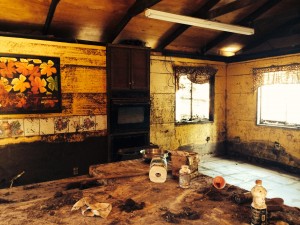
What once was the kitchen at Ignacio Springs. You can see the high water line at the top of the wall.
As we departed Ignacio Springs, we met a small group of cheerful and muddy people gathered in those gray chairs for lunch. They were a constant, bright reminder that perhaps it might be worthwhile to live here. They joked about random objects found in the fray or commented that Gary and Terry didn’t need that _____ anyway.
Perhaps this is the first clue to real climate adaptation: even if people rebuild to be destroyed another day, maybe this time they will rebuild with a realism and different materials but also a resilient, even cheerful, attitude. Some will stay, some will leave, but community and friendship may be the linchpin to reducing “risk.”
My heart still ached as we drove away.





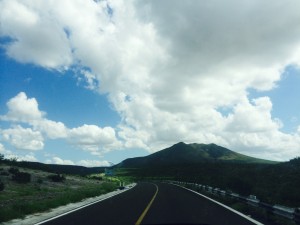
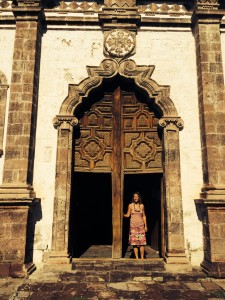

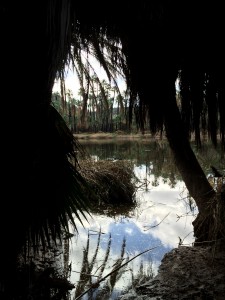
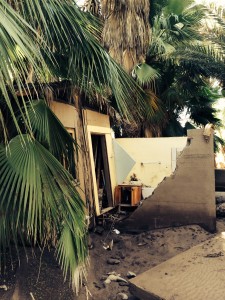
San Ignacio holds a special place in my memory. Very sad to hear about the hurricane damage. Also, I went through that same border crossing with 5 gallons of biodiesel. The experience of coming to Mexico always reminds me of the intense privilege with which we are able to cross a border so many others die getting across.
Beautiful piece, Jess.
Felt like I was there with you! Thanks for sharing so vividly.
Wow, Jess. I can’t wait to connect with guys down in LB and hear more about your journey. So sad for Terry and Gary but have no doubt they will bounce back. Resilient Canadians. Survivors!